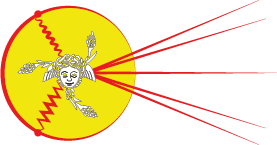Speaker
Ruben Sandapen
(Acadia University)
Description
Light-front holography, pioneered by Brodsky and de Teramond in the last decade, is an exact correspondence between a semiclassical approximation of light-front QCD and classical gravity in a higher dimensional anti-de Sitter space. Light-front holography predicts analytical forms for meson light-front wavefunctions which are essential to compute, amongst other processes, diffractive vector meson production at HERA and the LHC. This allows testing of the holographic light-front wave functions against experimental data. It is equally important to compare the predictions of light-front holography to those of other more traditional non-perturbative methods like lattice QCD, QCD Sum Rules and Dyson-Schwinger equations equations. The latter methods are able to predict the Distribution Amplitudes which are related to the holographic light-front wave functions. Here, we compare the predictions of light-front holography and the traditional non-perturbative methods for the Distribution Amplitudes of mesons.
Author
Ruben Sandapen
(Acadia University)

